How To Increase Vertical Jump For Basketball: Simple Steps
Every player needs a good vertical jump. It will assist your team in getting more rebounds, blocks and steals. It will also let a bunch (or several) of your team-mates dunk the ball, which will increase everyone’s confidence and enthusiasm, and can make the game a heap more fun.
If you are uncertain about whether one can increase their vertical jump, you will be glad to hear that with adequate training it is indeed an achievable goal.
But when you want to jump higher and have insane side-to-side agility reflexes that make your eyes cross, you must train on the best and most proven exercises. Just doing lay-ups and laps around the court won’t help; if you can’t get your vertical jumping or agility up to speed, there are ways.
7 Basketball Skills Training Exercises to Increase Vertical Jump
1. Jump Squats
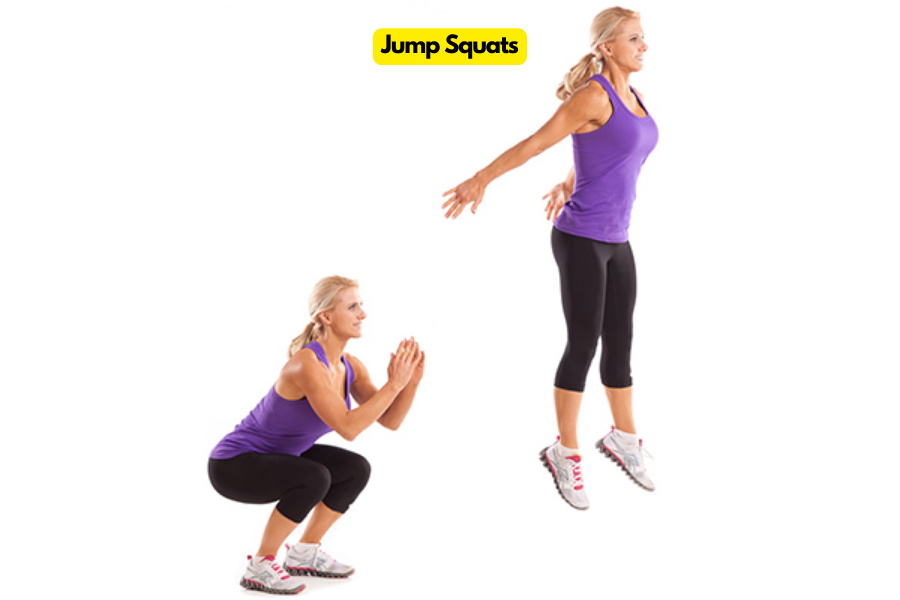
This upgraded version of the old fitness exercise will indeed make your vertical jump soar. In addition, it acquires explosive power that will immediately be of use to you with your agility on the court. It stimulates the fast-twitch fibers of several of the major muscle groups in the lower body, such as those of the quadriceps, hamstrings, glutes, hip flexors, and calves. A must if you want to jump higher.
Keep your feet at shoulder-width distance, and stand tall. As you bend at the knees, sit back as if about to sit down in a chair. Do not bow your head and keep the chest up. When your thighs reach parallel, you should push through your heels with an explosive jump up in the air. Land softly and immediately go into your next jump squat.
2. Tuck Knee Jumps
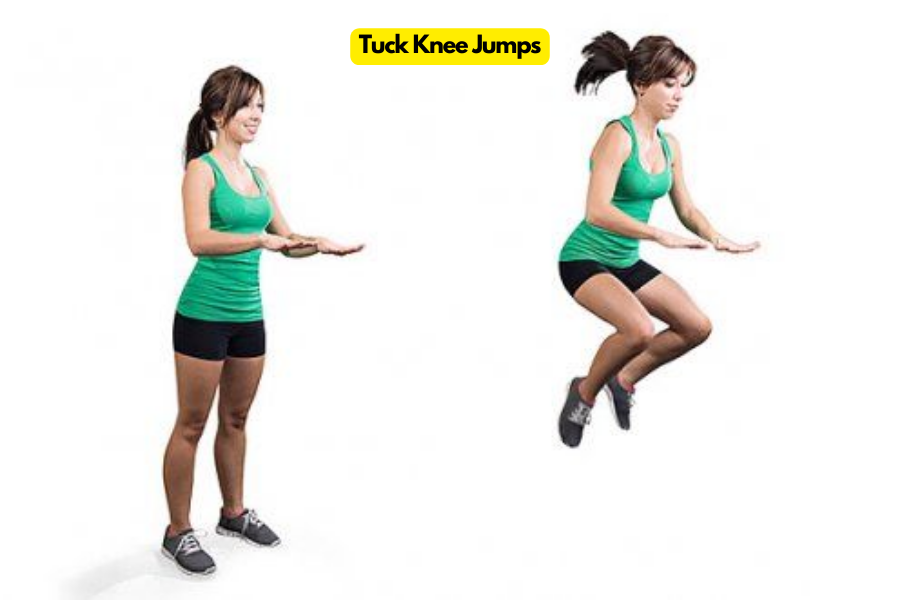
But tuck knee jumps aren’t just a way for you to jump higher they can also be used as a great method of increasing your explosive power. They also request less body control for bringing the knees up, poking out the chest, and landing before you attack. Doing this exercise will build coordination, fast-twitch fiber control, and obviously full power.
Keep your chest up, and feet at shoulder-width apart. Similar to the jump squat, you will start by bending slightly at the knees and driving your hips back just a little bit. Jump straight up into the air from this point. At the same time contract your pelvis and pull up your knees toward your chest. Then reverse the motion and land lightly. Pause to correct any posture problems, then do the next repetition.
3. Overhead Reaching Jump
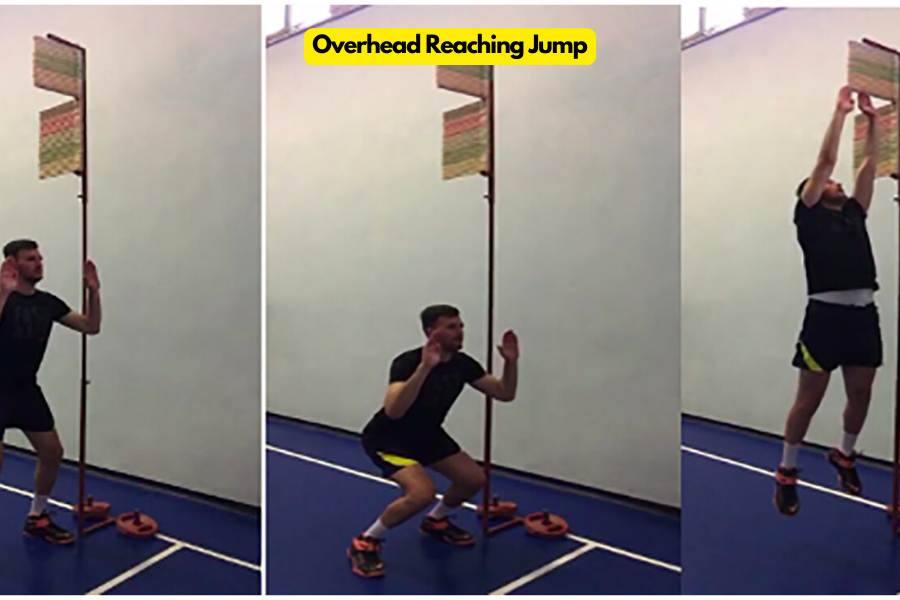
This is the jump squat step-up. Combining the jumping vertical motion of a jump squat with a reach overhead is way too common in your sport. You may discover that you can jump higher with this version of the exercise; jump from the momentum generated by the overhead reach itself. Catching passes and defense You don’t need us to tell you how important a good overhead reach is.
Stand tall, with your chest up and feet about shoulder-width apart. Like the two exercises described earlier, you begin by bending slightly at the knees and driving your hips back just a little. From here, jump straight up in the air. The major difference is that when you jump, your hands rise at the same time. On the way down, keep your hands close to your chest in a defensive position. The land is soft, readjust your posture and start again.
4. Single-Legged Cross Jumps
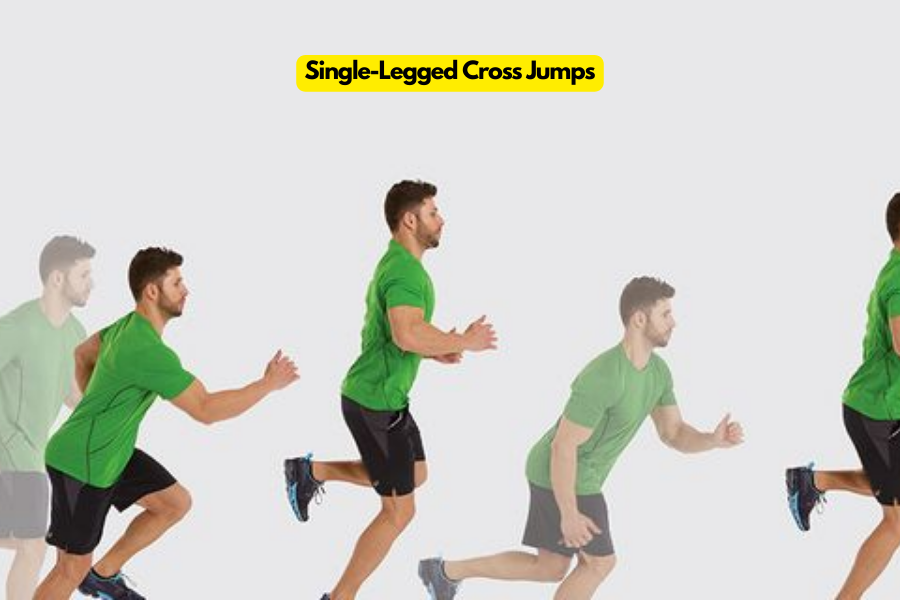
To achieve any athletic goal, you must be able to train your body through both multi-joint and isolation movements. In isolating a muscle group, you are training it to perform a certain move. This will serve the larger muscle groups in their moves. If you want to enhance your jumping ability and agility in this particular case, it will be necessary to do single-legged cross jumps.
This jumping drill will help you get the shape of a cross. With the right leg behind, start on the left leg. Hold your chest up with your core tight, then leap forward with your left leg. Still facing forward, jump to the left side and down with your left leg. But now jump directly to the right and back. Switch legs and begin again.
5. Wall Touches / Cone Taps
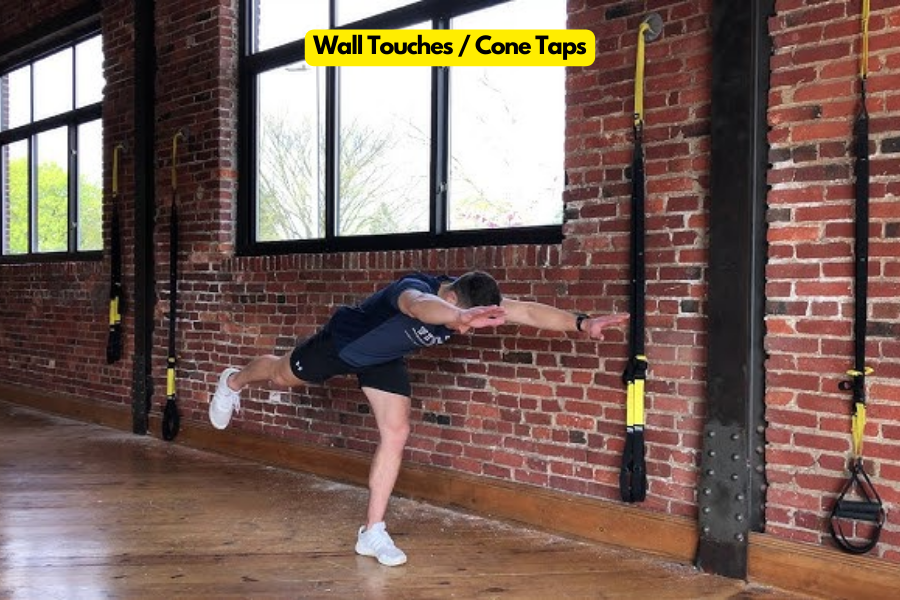
But let’s get more into the agility aspect, while you build and improve your vertical. Wall touches, or as they are sometimes called, cone taps is a great way to teach yourself those fast reflexes that an agile performer simply must have.
Put two cones a fair distance apart from one another. Start with the cones in the middle. If you use walls, stand between two. An indoor racquetball court is best. Sprint to your right as fast as possible, tap the cone or wall, and immediately change direction to do the same on the other side. For each set that you do, the distance can be different. For cones, you can also add a second or third pair arranged in a ladder shape (where you’ll need to run sideways from one cone to another).
6. Lateral Plyometric Box Jumps
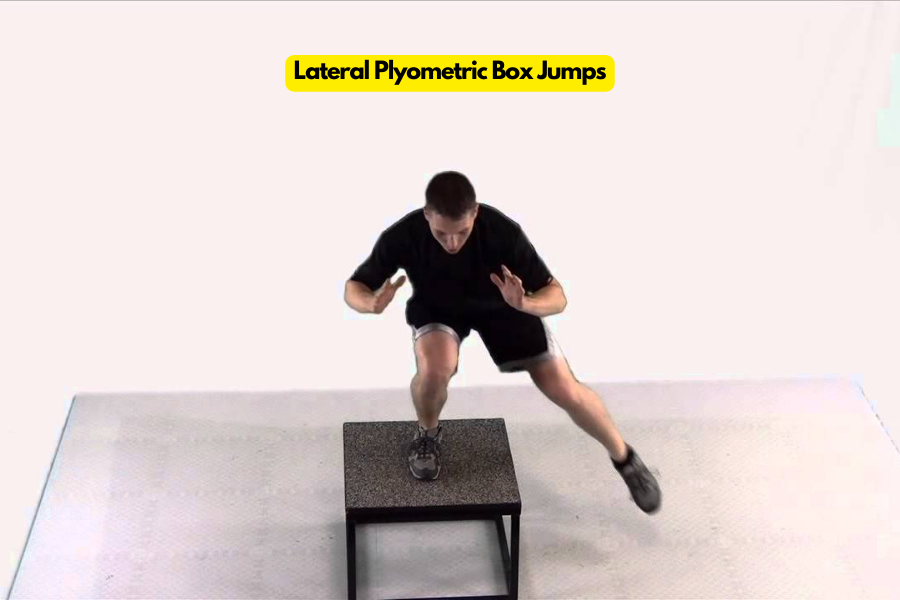
Even the Average Joe at the gym does box jumps. For basketball players, box jumps are going to be incredibly important but there’s a twist: You will be jumping in a lateral direction. These lateral box jumps will strengthen your hip flexors, which should help with your side-to-side agility (fast stop and go).
Place a stable box on the ground. Stand next to it, facing the box with your left side. Bend your knees slightly, keeping your chest up and core tight. Jump explosively off the ground completely on the box. You can either take a step down or jump lightly back into first place. After doing the prescribed repetitions, switch sides. During the workout, be sure to vary the heights of the boxes As you train, push yourself to increase.
7. Uphill Sprints
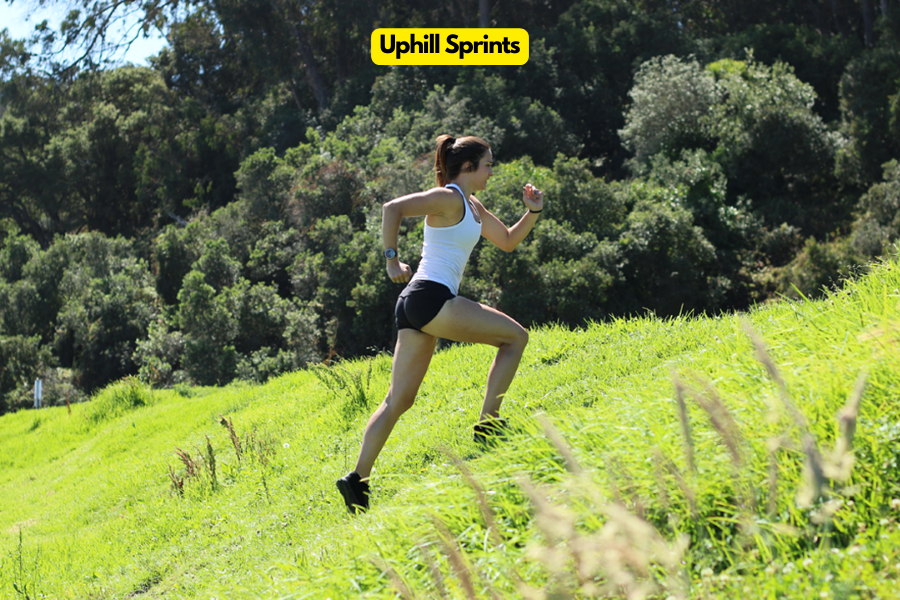
Sprint In other words, we take an exercise used by athletes in every sport and make it unique to the basketball player. Uphill sprints will greatly increase your endurance but more importantly for performance, they boost explosive power and lower body strength.
Tackle sprints after a warm-up. Starting at the bottom of a hill, allow yourself about 10 or 20 feet to pick up speed. 10 to 20 feet, run for all you’re worth, then hit the hill. Keep running up the hill as fast as you can, then come back down and sit for a few minutes before repeating. Do not run down the hill.
How to Measure Your Vertical Jump
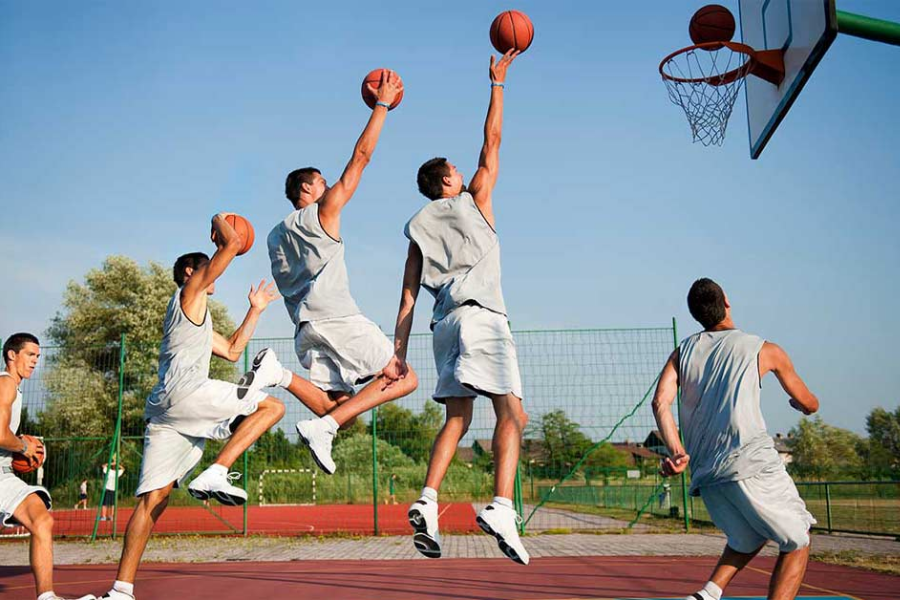
As the saying goes, “You can only improve what you can measure.”
The first step in raising your leap to new heights is that you need to know where you are now so you can follow your progress.
Here’s how to do it;
Things you’ll need: A second friend to assist you, a ladder and a permanent marker or chalk.
1. Locate a wall or pole at least as tall as yourself. Jump, and you won’t be able to touch the top.
2. Stand next to the pole or wall and stretch your arm out as far above your head as possible. This is your standing reach. Have your friend mark your standing reach with chalk or a permanent marker.
3. Starting from a standstill, jump and touch as high up the wall or pole. So you gonna need your friend to look on and point out where you tap, else how are folks gonna know? Ask your friend to climb up the ladder and indicate where you were able to reach before.
4. Your jumping reach minus your standing reach is the distance. This is your current standing vertical jump.
Read more: What is AAU Basketball? Including Positives and Negatives
Final Thoughts
If you made it through, congratulations! On your road to becoming a better, stronger, and faster athlete. These exercises are supposed to make your body ache and break you physically, so take good care of yourself after them so that you can recover fully.
